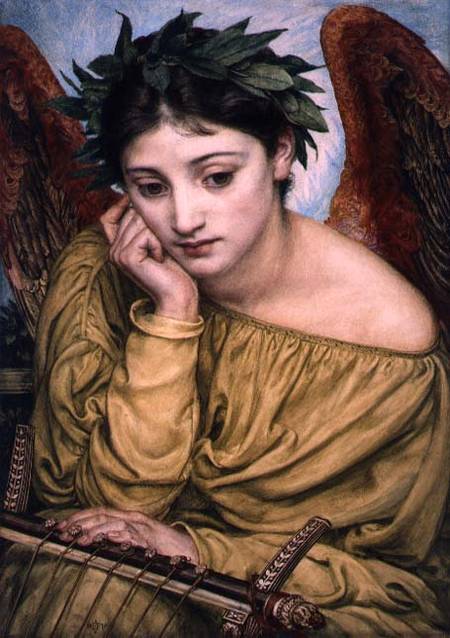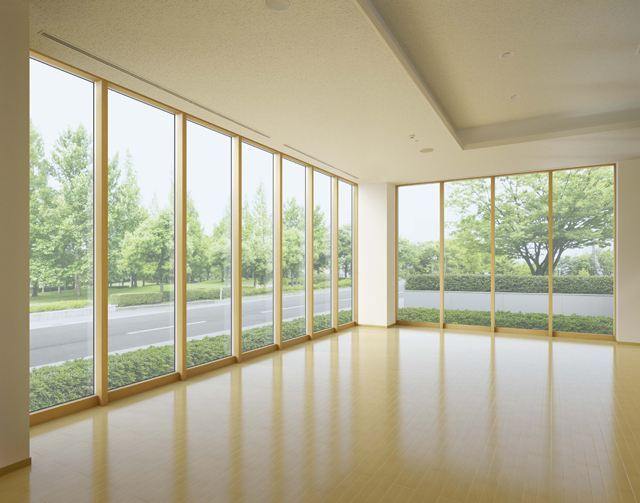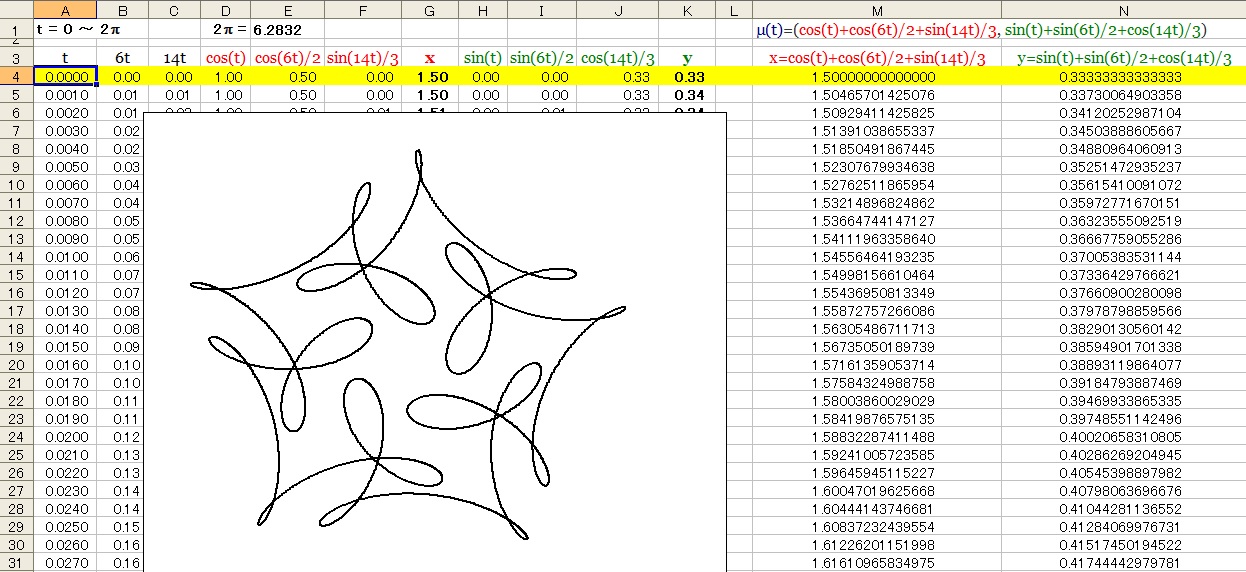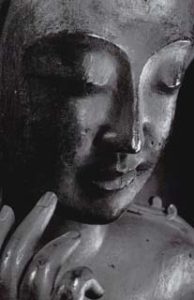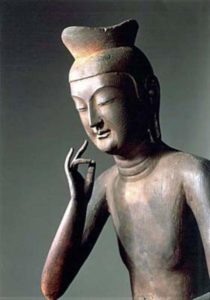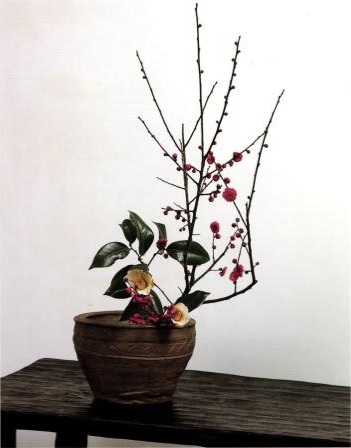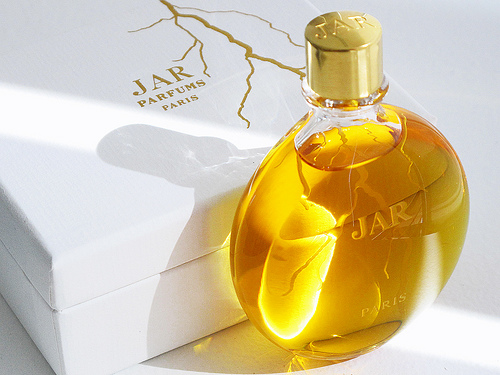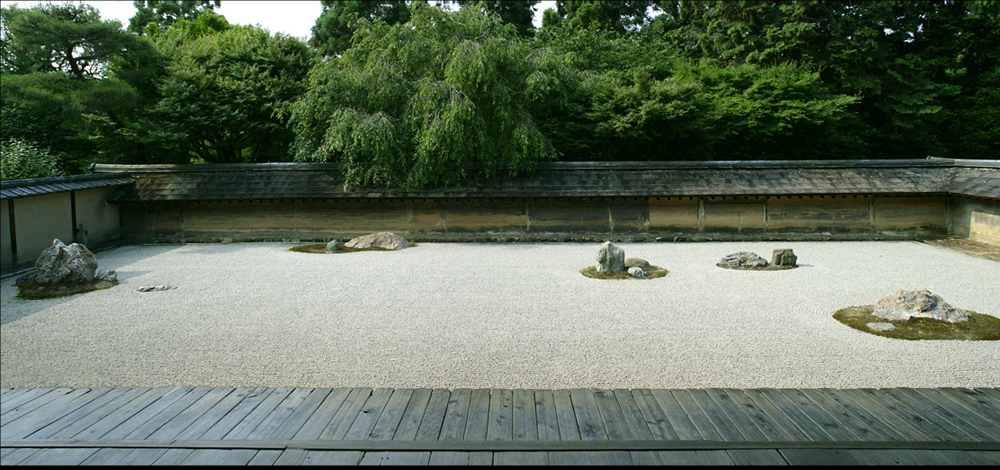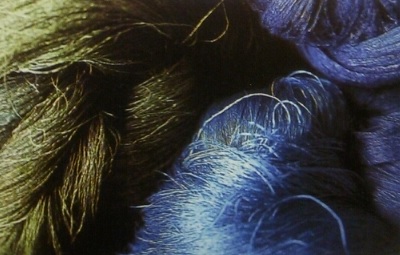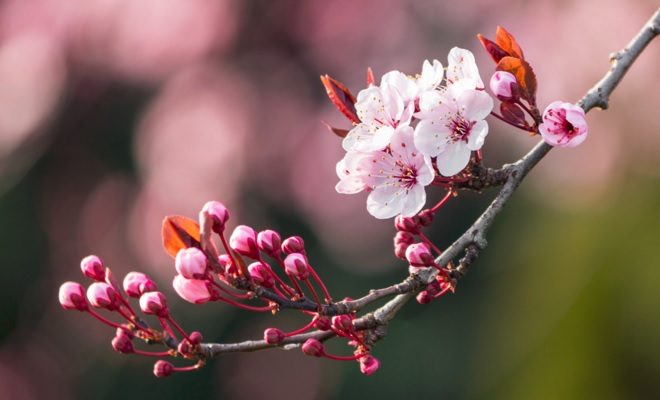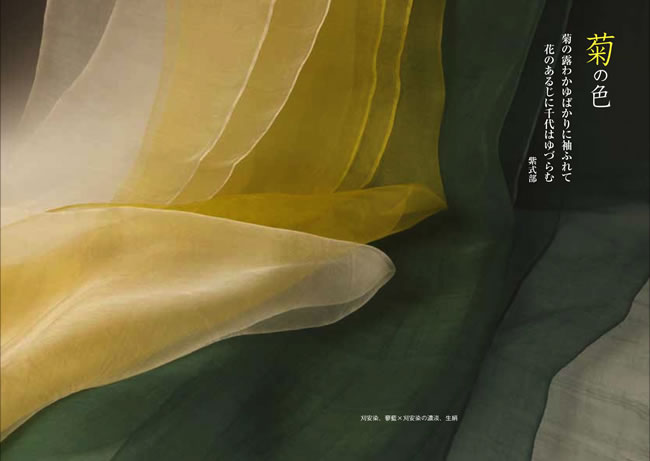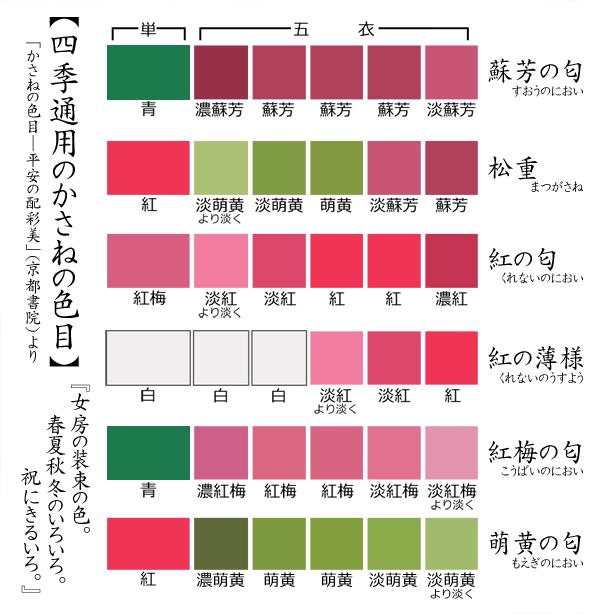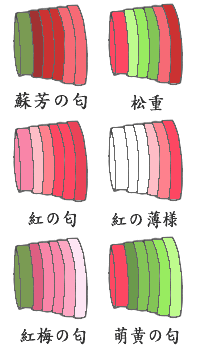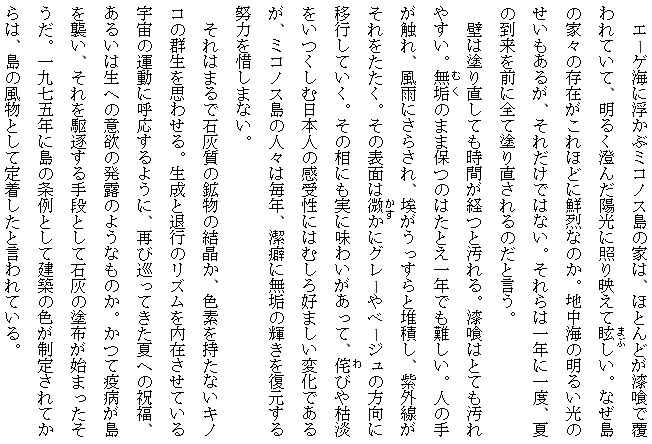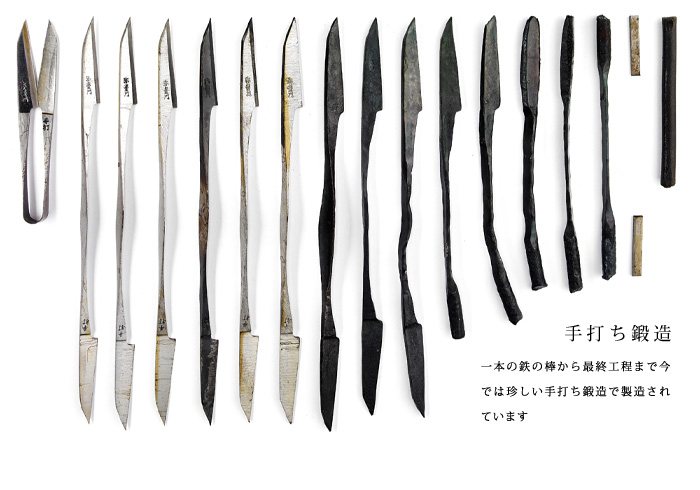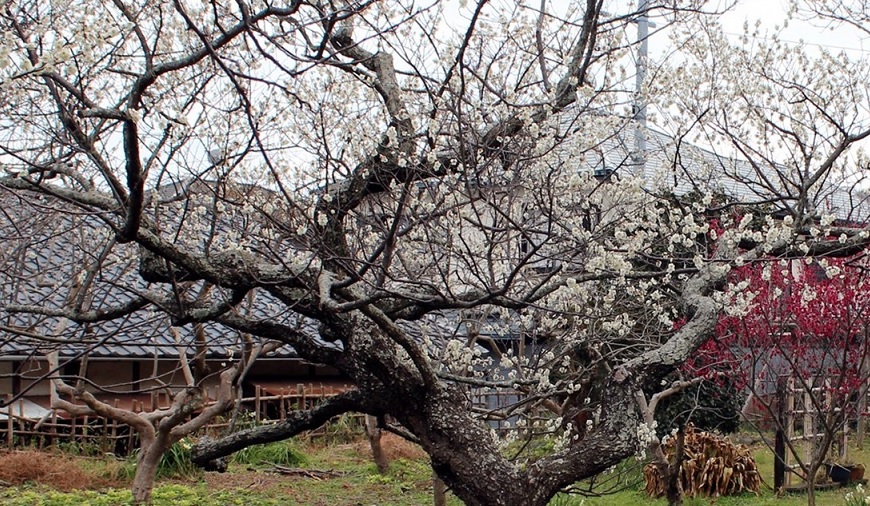Category Archives: beauty
日建設計
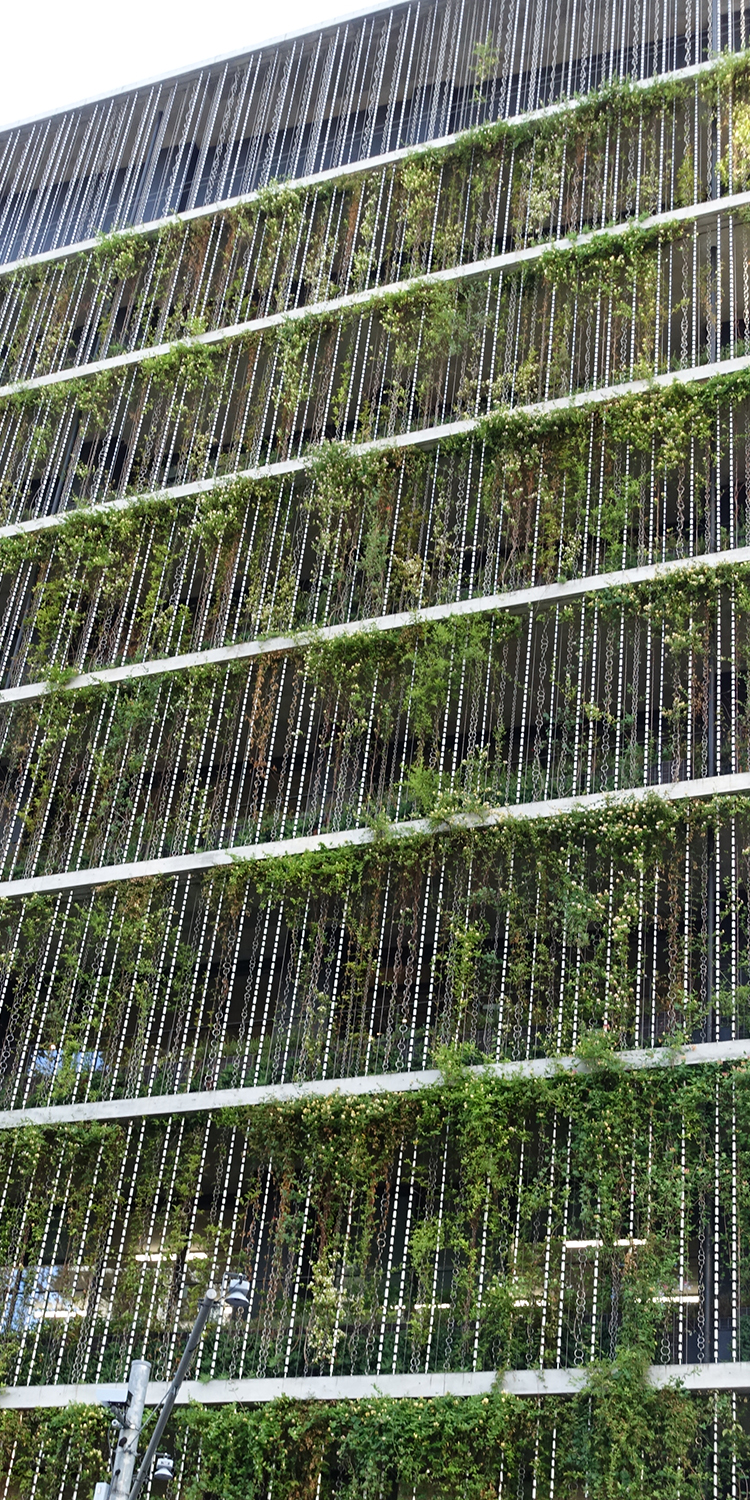 窓の開かないオフィスが多い中、当ビルは人が手で窓を開け気軽に自然換気を行えるようになっています。こうしたオプションがあることは、災害時に煙が出た時にも、いつものように窓を開けて、バルコニーに出られるという安心感にもつながります。
窓の開かないオフィスが多い中、当ビルは人が手で窓を開け気軽に自然換気を行えるようになっています。こうしたオプションがあることは、災害時に煙が出た時にも、いつものように窓を開けて、バルコニーに出られるという安心感にもつながります。
また、床から空気がしみ出す空調機を採用しているので、例えば寒く感じた時は、社員が吹き出し口にマットを敷いて、冷たい空気をブロックするなど、自分で環境を整えることができるようになっています。
一般的なビルは、空間の上部に梁があり、梁と梁の間に空調機が、さらには梁下に天井が「つられている」状態です。しかし当ビルではコンクリートの床の上に梁をつくり、その間に空調機を置き、その上に床を貼って居住するようにしています。この方式だと重いものは床下に「置かれている」ので、落ちてくる心配がありません。また床下に備蓄品も入れることができ、災害時の不便さも軽減し安心できるようになっています。
kd factory
 本書の付属DVD-ROMに収録されている素材データの著作権は著者に帰属します。素材データは本書の購入者に限り、個人利用および商業利用を問わず、何度でも使用することができます。新聞・雑誌・広告等のDTPデザイン、Webデザイン、自社製品パッケージ、チラシ、店舗POP、テレビ番組のテロップ、漫画・アニメーション作品の衣装や背景等、各種デザインワークにご使用いただくことができます。ただし、本書は本書は素材集としてデータを提供しているため、オリジナルコンテンツと組み合わせるなど、あくまで素材データとしてお使いください。
本書の付属DVD-ROMに収録されている素材データの著作権は著者に帰属します。素材データは本書の購入者に限り、個人利用および商業利用を問わず、何度でも使用することができます。新聞・雑誌・広告等のDTPデザイン、Webデザイン、自社製品パッケージ、チラシ、店舗POP、テレビ番組のテロップ、漫画・アニメーション作品の衣装や背景等、各種デザインワークにご使用いただくことができます。ただし、本書は本書は素材集としてデータを提供しているため、オリジナルコンテンツと組み合わせるなど、あくまで素材データとしてお使いください。
・加工に関しても制限はありません。
・使用許諾範囲内での素材データ使用に際して、使用許諾申請やクレジット表記は必要ありません。
YKK AP
Frank Farris
Frank Farris, Shinichi Kushima
Flavia Mazelin Salvi
Mélancolie, renoncement à l’éclat, simplicité, rusticité, imperfections, marques du temps, asymétrie, humilité, nature… Le wabi-sabi, concept esthétique japonais, est tout cela à la fois, et bien plus encore. Pour saisir son essence, il faut faire autant appel à ses sens et à sa sensibilité qu’à sa raison. Leonard Koren, architecte et théoricien de l’esthétisme qui lui a consacré non seulement un livre1 mais aussi des années d’études, en donne une définition en forme de poème impressionniste : « Wabi-sabi est la beauté des choses imparfaites, impermanentes et incomplètes. C’est la beauté des choses modestes et humbles. C’est la beauté des choses atypiques. » Il nous apprend que le wabi-sabi est « associé au bouddhisme zen et que l’on pourrait même l’appeler le “zen des choses”, étant donné qu’il illustre de nombreux principes spirituels/philosophiques du zen ». Contemplation, humilité, sérénité et détachement en sont quelques-uns.
土門拳
広隆寺
水上勉
| 一、こんなものを手すさびにつくったから、何かの物入れにして下さい。 | 一、物入れにするのは勿体ない芸術品です。 |
| 二、山奥のくらしだから、こんなものを眺めて海を思い出して下さる日もございましょう。 | 二、なるほど若狭の海の光景がうかびます。 |
| 三、かなり口がひろがりすぎて、依頼主にわたすと何やかや文句をいわれるやもしれんので、あなたに送ります。くず入れにでもしてくれませんか。 | 三、くず入れなどもってのほかです。 |
| 四、魚籠というものは、もともと魚を入れるためにつくるものですが、仕上がってみると、形がはなはだおもしろく、魚を入れなくても、壁かけにして、花でも活けてもらうと楽しいです。どうか、お好きなようにお使い下さい。 | 四、花を活けるのはいいですね。中に竹筒を入れれば、たしかに壁かけになります。それがいちばん山の家にふさわしい。秋は花がいちめん。さっそく、野生のコスモスをとってきてつめこんてみたくなりました。 |
| 五、からっぽの魚籠はどこか淋しいですか、考えようによっては、物を入れなくても香しい風光かつまっています。本来無一物。中有風露天日(なかにふうろのかおりあり)といったところですか。 |
五、だが、最後の風露香もいいですね。たしかに、魚籠は魚を収穫した時の入れ物にちがいありませんが、魚が入っていなくても、風格があります。この風格は、魚龍独得のかたちにあります。水につけておけば、収穫の魚が生きておれるのですが、魚も水も入っていない入れ物はたしかに淋しさはあるとはいうものの、中に香しい空気がみちあふれています。 もはや、何を入れなくても、それ自体が香りの箱です。すばらしい容器をありかとう。 |
紀友則
君ならで誰にか見せむ梅の花色をも香をも知る人ぞ知る
白洲正子
Frank Wilczek
The Schrödinger equation is approximate, in two important ways. First, it is based on nonrelativistic (Newtonian) mechanics, rather than on Einstein’s relativistic mechanics. Paul Dirac, in 1928, provided another equation for electron wave functions that obeys the assumptions of special relativity. Second, it does not contain the effects of quantum fluctuations, such as virtual photons, on the electrons. Nevertheless, the Schrödinger equation is accurate enough for most practical applications of quantum theory to chemistry, materials science, and biology, and it is the version of quantum theory that is usually adopted in treating those subjects.
岩井茂樹
「幽玄」に関して言えば、大西は「幽玄」という概念を次の七つの特徴を持つものとして規定した。それは、
(一) 何らかの形で隠され、蔽われていること、
(二) 仄暗く、朦朧で、薄明であること、
(三) 静寂であること、
(四) 深遠であること、
(五) 充実していること、
(六) 神秘性、または超自然的であること、
(七) 非合理的、不可逆的、微妙であること、
の七つであった。大西氏の「幽玄」理解がかなり象徴的であり、かつ神秘的であることは疑いを入れないところであろう。
大九工務店
Leonard Koren
Whether it’s trying to convince others that something is more true, more virtuous, or more desirable–all communication is rhetoric in action.
JAR
Bella Fiore Klinik
Marilyn Monroe
日建設計
龍安寺
志村ふくみ
Donald Richie
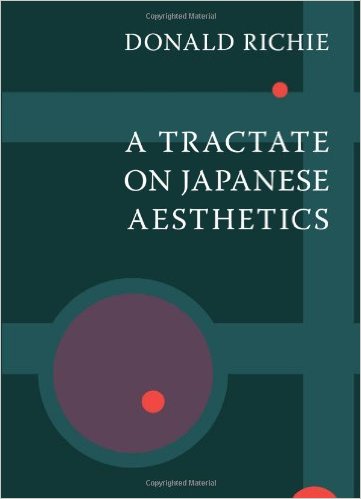 Many Japanese writers prize a quality of indecision in the structure of their work. And something too logical, too symmetrical is successfully avoided when writers ignore the suppositions of the questions asked of them. It is then not the assumptions of the writer’s controlling mind that are followed but, as the Japanese phrase it, the brush itself.
Many Japanese writers prize a quality of indecision in the structure of their work. And something too logical, too symmetrical is successfully avoided when writers ignore the suppositions of the questions asked of them. It is then not the assumptions of the writer’s controlling mind that are followed but, as the Japanese phrase it, the brush itself.
Zuihitsu, the Japanese word we might translate as “essay,” implies just that—following the brush, allowing it to lead. The structure is the multiplicity of strokes that make up the aesthetic quality, one which they imply and which we infer.
Kenya Hara
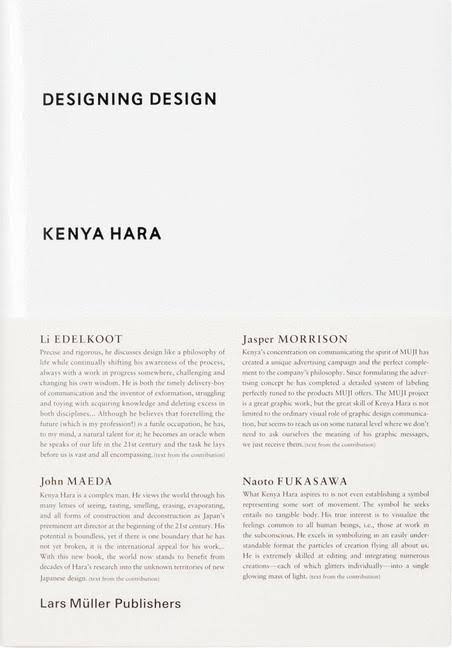 design, is basically not self-expression. instead, it originates in society. the essence of design lies in the process of discovering a problem shared by many people and trying to solve it. because the root of the problem is within society, everyone can understand plans for solutions and process for solving the problem, in addition to being able to see the problem from the designer’s perspective. design is appealing because the process creates inspiration that is engendered by this empathy among human beings in our common values and spirituality.
design, is basically not self-expression. instead, it originates in society. the essence of design lies in the process of discovering a problem shared by many people and trying to solve it. because the root of the problem is within society, everyone can understand plans for solutions and process for solving the problem, in addition to being able to see the problem from the designer’s perspective. design is appealing because the process creates inspiration that is engendered by this empathy among human beings in our common values and spirituality.
梅
Rabindranath Tagore
It is very simple to be happy, but it is very difficult to be simple.
**
Clouds come floating into my life,
no longer to carry rain or usher storm,
but to add color to my sunset sky.
Татьяна Лиознова, Юлиан Семёнов
NANA
表千家不審菴
利休の曾孫にあたる江岑宗左が、千家に伝わる伝承を書き記した文書のなかには、次のような逸話があります。利休は高麗筒の花入を四畳半の床柱にいつも掛けていた。利休が申されるには「この筒花入、鉢開の黒茶碗と墨跡を持っていれば、山住まいをしても寂しいことはない」。高麗筒の花入は、わびた趣の南蛮物の筒花入で、利休晩年のわびを象徴する道具の一つとして知られています。また鉢開は利休七種にもあげられる長次郎作の黒茶碗です。これらの花入と茶碗、そして禅の象徴である墨跡があれば、山住まいをしても寂しくないという利休の言葉は、利休の茶の湯の理想がどのようなところにあったのかを示しています。
直接目に見る美しさではなく、その風情のなかに美的な境地や、心の充足を探求しようとする精神をもって見ることのできる美しさ、すなわち「目」ではなく、「心」で見る美しさが利休の「わび」であり、利休の茶の湯を語るキーワードともいえるでしょう。
志條みよ子
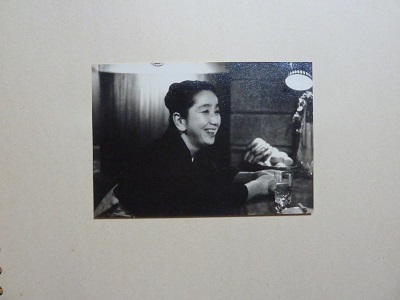 撮られている場所は、晩年睦子さんが客分として務めていたバーの一隅で、カウンターの上には高く盛られた果物皿やガラス製の花瓶などが見え、手元に水割りらしいコップが置かれ、灰皿には煙草の吸いかけが覗いている。
撮られている場所は、晩年睦子さんが客分として務めていたバーの一隅で、カウンターの上には高く盛られた果物皿やガラス製の花瓶などが見え、手元に水割りらしいコップが置かれ、灰皿には煙草の吸いかけが覗いている。
両掌を軽く合わせてカウンターへのせ、上体を少し前かがみにした姿勢を、斜め横から写したもので、まさに明眸皓歯の笑い顔である。きりっと後部に引き詰めた束髪が、豊満な耳朶をそっくり露出させ、頸筋から顎先にかけての線がことに美しい。
眼は大きい一重瞼で、笑い顔のせいか、瞳の黒さが一際に優しい輝きを放っている。モノクロームなので、髪と着物が漆黒に写り、額から鼻梁へのほどよいライトが顔面の白さを一段と映えさせている。愁いの翳りなど微塵もない、上品でしかも清すがしい麗姿麗貌である。
吉岡幸雄
Alex Kerr
満佐須計装束抄
新海誠
原研哉
Leonard Koren
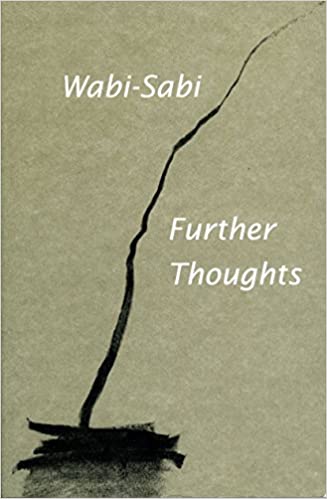 Beauty at the edge of nothingness. Wabi-sabi emerges out of the infinite potentiality of nothingness. The distinctiveness of wabi-sabi comes from that which is so faint, tentative, delicate, and subtle that it may be overlooked—or mistaken as trivial or insignificant.
Beauty at the edge of nothingness. Wabi-sabi emerges out of the infinite potentiality of nothingness. The distinctiveness of wabi-sabi comes from that which is so faint, tentative, delicate, and subtle that it may be overlooked—or mistaken as trivial or insignificant.
Elegant poverty. ‘Poverty’ in this meaning refers to a mindset of non-attachment, i.e., not holding onto fixed ideas or material things. ‘Elegant’ refers to a grafeful acceptance of restraint, inconvenience, and uncertainty.
Imperfection. Iconographically, wabi-sabi is often represented by the entry is processes of nature made visible. Entropy precipitates chaos and unpredictability, and this produces variety and interest. ‘Irregularity,’ rather than ‘imperfection,’ is probably a more apt term, but imperfection has more resonance.
Leonard Koren
In 1992 I embarked on a quest to identify and describe the particular kind of beauty I felt most deeply drawn to. At the time I was living principally in Japan. By “beauty” I mean that complex of exciting, pleasurable sensations—ostensibly emanating from things—that makes us feel more alive and connected to the world. Often these feelings are accompanied by a compelling sense of truth, goodness, and/or love.
Why my interest in beauty? My father had recently died in a freak car accident and I found myself questioning the purpose of life. Of all the possibilities considered, the capacity to experience beauty seemed like one of the best reasons for living. Beauty is an involuntary response to a high-order pattern recognition. Perhaps it is even a glimpse into our mind’s underlying perceptual architecture. As such, beauty is a kind of “enlightenment” that reveals something fundamental about the way in which the world appears to us. I wanted to understand this process better.
I sensed that the species of beauty I was most attracted to was close at hand, hiding in plain sight as it were. It was not about good taste; possibly it was about its opposite. But it was a beauty that most sensitive, aesthetically inclined people would surely be able to recognize.
Genevieve Antoine Dariaux
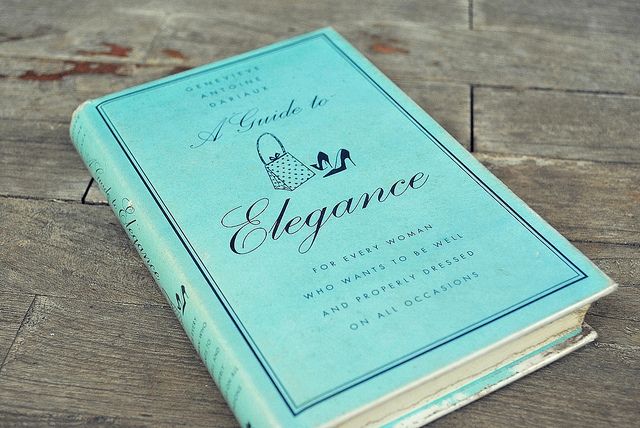 What is Elegance?
What is Elegance?
It is a sort of harmony that rather resembles beauty, with the difference that the latter is more often a gift of nature and the former the result of art.
The origin of elegance is easily traced. It springs and develops from the habits of a civilized culture. The word comes from the Latin eligere, which means ‘to select’.
François Daniel Giezendanner
Le Wabi-sabi est :
- Une beauté des choses imparfaites, impermanentes et incomplètes.
- La beauté des choses modestes et humbles.
- La beauté des choses non conventionnelles.
Fritz Karsh, Rebecca Robertson
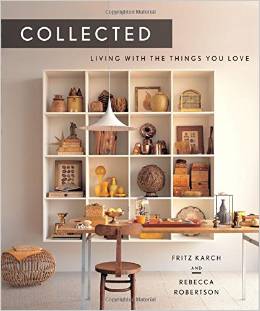 The collections range from dice, to cafe au lait bowls, to sand from beaches around the world, to international toilet paper – demonstrating both the beauty and the whimsy at the heart of collecting. From no frills (“The Modest”) to ornate (“The Boastful”), the book will showcase fifteen different personality types in their own chapters, including the minimalist, the colourist and many more. Each type will be featured alongside gorgeous photos, fascinating close-ups and vignettes showing how the objects are displayed and a collecting lesson.
The collections range from dice, to cafe au lait bowls, to sand from beaches around the world, to international toilet paper – demonstrating both the beauty and the whimsy at the heart of collecting. From no frills (“The Modest”) to ornate (“The Boastful”), the book will showcase fifteen different personality types in their own chapters, including the minimalist, the colourist and many more. Each type will be featured alongside gorgeous photos, fascinating close-ups and vignettes showing how the objects are displayed and a collecting lesson.
吉田兼好
花は盛りに、月は隈なきをのみ、見るものかは。雨に対ひて月を恋ひ、垂れこめて春の行衛知らぬも、なほ、あはれに情深し。咲きぬべきほどの梢、散り萎れたる庭などこそ、見所多けれ。
ドナルド・キーン
義政が育んだ文化は義政自身の人生を豊かにしたばかりでなく、日本人すべての人生を豊かにしたのだった。我々は義政が行動に出ようとしなかったこと、つまり一方に味方することを拒否したことに一人の衰弱した暴君を見るのではない。むしろそこに見ていいのは、自分を取り巻く終わりのない紛争に解決を見つけることを断念した一人の教養人の姿である。義政が東山に建てた山荘は、ふつう銀閣寺という名前で知られている。もっとも、それは(義満の金閣寺と違って)銀箔で飾り立てられていたわけではなかった。この名前が暗示しているのは、義光の黄金時代ほど光り輝いてもいなければ色彩鮮やかでもない一つの時代である。義政が好んだ芸術―――茶の湯、水墨画、能―――は、燻し銀のように控えめな気品を備えていた。
Cynthia Freeland
It is not easy to say how we categorize things like red roses as beautiful. The beauty of the roses is not out there in the world, as the roundness and flatness are in the plates. If it were, then we would not get into so many disagreements of taste. And yet there is some sort of basis for claiming that the roses are beautiful. After all, there is quite a lot of human agreement that roses are beautiful and that cockroaches are ugly. Hume tried to resolve this problem by saying that judgements of taste are ‘intersubjective’: people with taste tend to agree with each other. Kant believed that judgements of beauty were universal and grounded in the real world, even though they were not actually ‘objective’. How could this be?
Raffaele Milani
We learn from the trees, the flowers, and the blades of grass in a continuous flow of revelation. In this sense, we discover that within humans a devotion to “enlightened nature” exists. We begin to see aspects of the aesthetic of the fadeur (the bland or the tasteless) that François Jullien has recently discussed in illustrating the processes of the unveiling of nature. It is the spirit of the form that is grasped in the act of contemplation. In the beauty of the landscape, we discover that we are pilgrims in a world of dreams and light.
Grazia Marchianò
Il modello di perfezione sarà la natura stessa a fornirlo; nei suoi cicli di nascita, crescita, proliferazione, decadimento, estinzione, il mondo vegetale nella dottrina del Loto è considerato una sorta di yoghi involontario: nascendo intraprende la sua disciplina, porta a frutto la capacità di generare, avvizzisce e si spegne in un circolo di rinascita che non ha fine. In questa prospettiva il rapporto uomo-natura invalso nel regime dei ‘dualismi occidentali’ è rovesciato: non è l’uomo misura del creato e culmine della scala dei viventi, ma è la natura nel complesso a essere misura a se stessa, modello di un ‘risveglio’ che per l’uomo invece è conquistato a fatica. La natura buddhica dell’universo, nella dottrina del Loto, non distingue tra un’ameba, una stella o un uomo. Dice Kûkai: “Il corpo del Buddha è il corpo di tutti gli esseri, e il loro corpo è quello del Buddha. Diverso eppure identico. Non diverso eppure non tale”.
Man is not the measure of the cosmos and the creation at the top of the hierarchy of living entities, but it is nature in its totality that is the measure of itself, the model of a reawakening that humans attain with effort. According to the doctrine of the Lotus, the Buddhist nature of the universe makes no distinction between an amoeba, a star or a human being.
Alexander von Humboldt
Those who travel the oceans and lands of this vast world are haunted by the monotonous, sad images of the lacerations caused by humans – indeed, as does the historian who examines events across the ages. Therefore, those who try to find serenity amid the discordant scenes gladly look deeply into the silent life of plants and the sacred natural forces or abandon themselves to an innate instinct, turn their gaze skyward toward the distant stars that in undisturbed harmony continue their eternal motion.
Mikel Dufrenne
Whether it is the existence of the work, the praxis of the artist or the imagination that is the aura of the perceived object, we intuit the poesis of Nature all around us … . How can we refuse to think of this tireless presence of the bed in which we are born and which the experience of art continues to reaffirm?
Van Gogh
I see that nature speaks to me, tells me something, as if I were recording in shorthand. In my transcription there may be words that cannot be deciphered, mistakes, or gaps; but something remains of what those woods or that beach or that figure has told me.
Raffaele Milani
The images of nature in general express a need for immediacy and are not subject to conventions, rules, or technical specifications. They are something at once instinctive and concealed. Natural beauty is indeterminate and indefinable. The meeting of day and night, light and darkness, the seasons in the form of atmospheric conditions, creates a kaleidoscopic play of sensations that pleasantly overcomes us. The wonder of seeing and feeling is born of the sense of surprise.
Giacomo Leopardi
The feeling we experience at the sight of the countryside or of anything else that inspires vague or indefinite but delightful thoughts cannot be grasped and can be compared to the experience of one who chases a beautiful butterfly without ever catching it. And so, it leaves the soul yearning: this is our most intense pleasure and everything that is certain and well defined satisfies us less than does this uncertainty, which can never fully satisfy us.
Immanuel Kant
A man who has taste enough to judge the products of fine art with the greatest correctness and refinement may still be glad to leave a room in which he finds those beauties that minister to vanity and perhaps to social joys, and to turn instead to the beautiful in nature, in order to find there, as it were, a voluptuousness for the mind in a train of thought that he can never fully unravel. If that is how he chooses, we shall ourselves regard this choice of his with esteem and assume that he has a beautiful soul, such as no connoisseur and lover of art can claim to have because of the interest he takes in his objects.
Ernst Cassirer
I may walk through a landscape and feel its charms. I may enjoy the mildness of the air, the freshness of the meadows, the variety and cheerfulness of the colouring and the fragrant odour of the flowers. But I may then experience a sudden change in my frame of mind. From this point on I see the landscape with an artist’s eye: I begin to form a picture of it. I have now entered into a new realm, not the realm of living things but of “living forms.” No longer in the immediate reality of things, I now live in the rhythm of spatial forms, in the harmony and contrast of colours, in the balance of light and shadow. The aesthetic experience consists of this being absorbed in the dynamic aspect of form.
播州刃物
上田良就
Raffaele Milani
Vediamo apparire, nella conquista umana dello spazio naturale, nell’ansia di sfruttare il territorio, nell’operare senza sosta su forme e materiali, dei criteri di modificazione, descrizione e progettazione, come di tutela e conservazione che vengono ideati e messi a punto da un approccio multidisciplinare. Tali criteri disegnano diversi percorsi, tra modernità e tradizione. Il rapporto uomo-paesaggio mostra come essi cooperino a uno stesso avventuroso destino. E’ il lavoro a condurre l’uomo nel regno delle trasformazioni che lui stesso promuove, per il paesaggio è invece il complesso di varie mutazioni strutturali e naturali a organizzare il piano dei suoi segni evolutivi. Entrambi sembrano raccontare qualcosa perché vivono di un fare reciproco, come di uno scambio legato anche al mito e alla memoria: l’uno con un insieme di dati, usure del tempo, catastrofi, distruzioni, tutti elementi diffusi nei luoghi per segni sovrapposti e intrecciati, l’altro con un sistema di opere, immagini e sentimenti. Potremmo in un certo senso pensare a un incrocio di racconti, quello degli uomini e quello del territorio. L’acqua, la pietra e la terra da un lato, il contadino, lo scultore, l’architetto dall’altra.
Geoffrey Miller
But what if we step back from the fine arts and ask ourselves what engagement ordinary humans have with visual ornamentation, once they step outside the dim museums of Florence and return to their real lives. Our opportunities to appreciate the fine arts typically arise during vacations and weekend trips to local museums. But visual ornamentation surrounds us every day. We wear clothing and jewelry. We buy the biggest, most beautiful houses we can afford. We decorate our homes with furniture, rugs, prints, and gardens. We drive finely designed brightly colored automobiles, which we choose for their aesthetic appeal as much as their fuel efficiency. We may even paint the odd watercolor. This sort of everyday aesthetic behavior comes quite naturally, in every human culture and at every moment in history.
There is no clear line between fashion and art, between ornamenting our bodies and beautifying our lives. Body-painting, jewelry, and clothing were probably the first art forms, since they are the most common across cultures. Nor is there a clear line between art and craft—as William Morris argued when founding thc Arts and Crafts movement in Victorian England. Fine art may be strictly useless in pragmatic terms, while good design merely makes beautiful that which is already useful. When we address the evolution of human art, we need to explain both the aesthetic made useless and the useful made aesthetic. Even apparently pragmatic tools like Homo erectus handaxes may have evolved in part through sexual selection as displays of manual skill.
Michael Grab
Carolina Herrera
On the white blouse …
The white shirt is one of the easiest things to wear, because you can dress it up or you can wear it with jeans or you can wear it with a ball gown. I mean with a ball skirt. It’s so easy.
When I don’t know what to wear, I say a white blouse. You can give your own look to it.
On the Carolina Herrera brand …
I think women in Carolina Herrera … I like them to be sophisticated and I like them to be classic with a modern twist.
On juggling work and family life …
We women manage to do many things at the same time. Men, no. Men do one thing at a time.
Greek
In Greek you don’t really say “I miss you”. You say “μου λείπεις” (mou leipeis) which is closer to “you are missing from me” 🙂
Joe Schulz
八條忠基
千野香織
絵巻の鑑賞法の最も重要な点は、既に見た画面は右手の中に巻き込まれてしまい、これから見る画面はまだ左手の中にあって、どちらも、現在の時点では見ることができない、というところにあるからである。鑑賞の時間において、右手は過去であり、左手は未来である。そこでは、左を向いた直線的な鑑賞の時間が、あらかじめ設定されている。
建築史研究の進展に導かれながら障壁画を改めて見直した結果、私の目にはっきりと浮かび上がって見えてきたものは、日本の障壁画のなかのジェンダーの問題という、きわめて今日的なテーマであった。その建築と障壁画の様相を詳しく述べた後、ジェンダーの視点から日本の障壁画の問題を考えるという結論部へ進んでいくこととしたい。
作品を細部に至るまで詳しく見て、それを現実社会の文脈の中に置いて考え、そこに現代人としての希望を読み込むこと、そのような行為の遂行を続けていくことが、美術史家としての私の願いである。作品を「真に」見ることは、同時代の人々とともに、現代の問題を考えることである。それは新しい未来を作っていく、という可能性にも通じている。
Bryan Paul Sullo
Rafael Rojas
I consider photography as a very special life philosophy based on the observation, understanding and respect for the world in which we live. Photography has become my voice, my means of transmitting my personal vision of the world and an opportunity for sharing with others the feelings that engulf me when I press on the shutter. Photography is my creative tool for stirring emotions in the same way as a brush for an artist or a pen for a writer. In my work, the outer landscape combines with my inner one, revealing who I am and what I feel. In a way, through photographing the world, I portray myself…
吉岡幸雄
人が美しい色を求め続けるのはなぜだろうか。
自然とひたすら向き合う仕事にたずさわってから、私は、人が古来より美しいものに憧れ求め続けてきたのは、眼に映ずる自然の移ろいを身近に引き寄せたいと願うからであると、確信するようになってきた。
たとえば朝、太陽を拝する。その光に照らし出された山や野の万緑が輝き、海や川の水は天を映して碧く澄む。季の花が鮮やかな彩りをそえる。
そうした自然の一瞬の姿、花のひとひら、風に揺れる枝葉の表裏に、木の実の色と形に、人々は魅せられて、それらにゆかしい名をつけるようになっていった。
Stan Chang
NHK
Anaïs Nin
We don’t have a language for the senses. Feelings are images, sensations are like musical sounds.
Lillian was reminded of the talmudic words: “We do not see things as they are, we see them as we are.”
When we blindly adopt a religion, a political system, a literary dogma, we become automatons.
Tai Carmen
Characterized by asymmetry, irregularity, simplicity, economy, austerity—modesty & intimacy—wabi-sabi values natural objects & processes as emblems of our transitory existence. Rust, woodgrain, freckles—the texture of life.
Developed in the 15th century in reaction to the lavish, ostentatious ornamentation of the aristocracy, wabi-sabi centers around three principals: “nothing is perfect, nothing lasts, and nothing is finished.”
Joan Tollifson
Dogen’s understanding of nonduality is subtle, nuanced and all-inclusive — so all-inclusive that it even includes duality: “The Buddha Way is leaping clear of the many and the one.” In this radical view, even the map is the territory: “Neither the dharma world nor empty space is anything other than the painting of a picture….The moon and the pointing finger are a single reality.” For Dogen, nothing exists independently of everything else. “There is nothing outside of mind,” he writes, “Blue, yellow, red, and white are mind. Long, short, square, and round are mind. The coming and going of birth and death are mind…Dream, phantom, and empty flower are mind. Water, foam, splash, and flame are mind. Spring flowers and autumn moon are mind. All things that arise and fall are mind.” He questions whether there is any kind of inherent objective reality “out there” apart from present experiencing: “Is it that there are various ways of seeing one object,” he asks, “or is it that we have mistaken various images for one object?” He says in Genjokoan: “No creature ever comes short of its own completeness.” Dogen’s burning question as a young monk was, if everything already has (or is) Buddha Nature, then why do we need to practice? His response is that to regard practice as the means by which we attain enlightenment in the future is to miss the point completely. Practice is the expression of enlightenment here and now. “If you say that you do not need to fan yourself because the nature of wind is permanent and you can have wind without fanning, you will understand neither permanence nor the nature of wind.” Enlightenment is simply seeing through delusion: “Those who have great realization of delusion are buddhas; those who are greatly deluded about realization are sentient beings.” And he says, “When you find your place where you are, practice occurs, actualizing the fundamental point…The place, the way, has not carried over from the past, and it is not merely arising now…meeting one thing is mastering it–doing one practice is practicing completely.” Dogen is poetic and profound.
PR01.
steady study
ドナルド・キーン (Donald Keene)
日本の美意識を取り上げていこうとする際、それを中心に論じてみたいいくつかの項目が頭に浮んでくる。「暗示、または余情」、「いびつさ、ないし不規則性」、「簡潔」、「ほろび易さ」である。そうした互いに関連する美的概念は、日本人の美的表現の、最も代表的なものを志向している。とはいえ、これらの反対概念、すなわち「誇張」、「規則性」、「豊饒」、そして「持続性」なども、決してなくはないこと、これは繰り返すまでもない。
丹羽鼎三
従来、庭園を説くもの、ほとんどすべてが、庭園の用途・効用をあげ、もって庭園の解説となすにすぎない。しかしながら、かような説明は庭園の本質を解明したとは言えない。たとえば、刀は人を斬るものであるという説明では刀の用途・効用は示しはするが、これによって刀がどんなものであるか、その本質を知ることはできない。
**
想像の世界は、広く自由であるから、観者が、勝手に連想し想像するのが、面白いのである。所謂、噛みしめれば噛みしめる程味があると、云うことになるわけである。現実に近くては、其の眼前の現実に捉ほれてしまって、自由に想像を逞ふすることが、出来なくなる。従ってまた、写意の庭園は、道具建を余り多く使っていない方が、面白い。優れた写意の庭は、決してごてごてと庭石や庭樹を、列べ立てていない。其の極端なるものに、俗称「虎の子渡」と伝えらるる、京都龍安寺方丈の庭園がある。
辻邦生
パルテノンの啓示は、美とは、大きな光のように、この地上を包んでいる絶対 一者的存在だ、ということを語っていた。
セーヌの橋上の啓示は、世界が私と一つであり、私と無縁なものなどは存 在しない。森羅万象は私なのだ、ということを示していた。
リルケの詩の啓示は、美の一つ一つが、それぞれに絶対の美の現れだとい うことを語っていた。
そしてこの三つに共通するのは、われわれの生の根拠 につねに美が存在し、それが生のすべてを包んでいる、ということだった。 私は美を求めて物から物へ喘ぐように遍歴していたが、そんな必要はまったくない。美とは、そして幸福とは、いまここにある。それに気づくことが肝心なのだ――そう思ったとき、一挙に、溟濛の霧が晴れるのを感じた。
太田宏介, 石川直宏, 圍謙太朗
IMA CONCEPT STORE
JR東海
國母和宏
Mieko Avello, Kazue Masuyama
日本の美学「わび、さび」
Simplicity and Elegance as Japanese Ideal Beauty
- わび is both an aesthetic and moral principle. Literary, わび means “to worry about, to feel sad, to feel lonely.”
- わび is described as “imperfect beauty” which was sought out by Sen no Rikyu, who accomplished tea ceremony as an art form. わび is “elegant simplicity that abandoned extravagance and arrogance.”
- 哲学としてのわび “in modern society, one should not be captured by current secular social values such as wealth, power, and fame, but seeks out the highest virtue beyond its time and one’s social status.”
- さび is described as “the ideal circumstance of Basho’s Haiku world,” and indicated as “loneliness” or “total isolation” and seek out some meaning of “continuously changing ruthless world.”
- さび is beauty that are free from interest of others and complicated human relationships and be coincident with the nature.
Анастасия Страшевская
Leonard Koren
Beauty can be coaxed out of ugliness. Wabi-sabi is ambivalent about separating beauty from non-beauty or ugliness. The beauty of wabi-sabi is in one respect, the condition of coming to terms with what you consider ugly. Wabi-sabi suggests that beauty is a dynamic event that occurs between you and something else. Beauty can spontaneously occur at any moment given the proper circumstances, context, or point of view. Beauty is thus an altered state of consciousness, an extraordinary moment of poetry and grace.
1953-2013
Still in the Stream
The two word phrase “wabi sabi” originated in the Japanese language but has made its way into English largely because English lacks an adequate equivalent.
Even in Japanese the exact meaning of the phrase is difficult to pin down. It is first and foremost a beauty seen in aged or worn objects; objects that contain deep patterns, patina, character, or qualities of authentic individuality.
Wabi sabi is not a technique for increasing wealth, or tapping into some unseen mystical power. It is quite the opposite. It is an intuitive way of living that involves noticing the moments that make life rich and paying attention to the simple pleasures that can be over-shadowed by the bustle and excess of our consumer society.
Brigitte Bardot
Quoi de plus beau qu’une vieille dame chère devenir sage avec l’âge? Chaque âge peut être enchanteur, à condition que vous vivez dedans.
江里佐代子
Richard Palmer
Jenny Depper
 During the holiday season several years ago, Paul Walker walked into Bailey Banks and Biddle Jewelers in Santa Barbara, California, and, according to sales associate Irene King, what happened next was practically out of a feel-good Hollywood movie.
During the holiday season several years ago, Paul Walker walked into Bailey Banks and Biddle Jewelers in Santa Barbara, California, and, according to sales associate Irene King, what happened next was practically out of a feel-good Hollywood movie.
Walker was browsing for bling at the same time as a soldier who had just finished his first tour of duty in Iraq, and was looking at engagement rings with his fiancée.
According to King, the pair saw a ring set they liked, but it was way too expensive and boasted a hefty $10,000 price tag.
In comes Walker. The blue-eyed actor called the store’s manager and told him to put the ring that the couple was looking at “on his tab,” but to keep his identity hidden. He promptly walked out of the store. According to King, the store never told the couple that Walker was the man behind the purchase, and nobody ever knew the sweet story until now.
Duo Artemiev
原研哉
これは同仁斎という義政の書斎ですが、彼の当時の感性を端的に物語っています。今の和室といわれるものの源流が、全てここに集約されていると言われています。言わば、和室の原型ですね。畳敷きの四畳半ですが、これ以前は、畳はまだ床に敷きつめられてはいなかった。畳は板の間の一部に置かれて、畳の縁には段差があったんです。
障子もほぼ完成されています。障子は完壁な面光源になって、直射日光は差さない。デスクトップは帳台とよばれるもので、書き物をするところですが、すばらしいのはデスクトップの面に接して全面に障子があって、これがすっと開くんですね。開くと庭の景色がちょうど掛け軸のようなプロポーションで切りとられてくる。帳台の左には違い棚があって、渡来ものや本などをここに飾ったりするわけです。
向かって左手と、カメラ側も襖です。襖、襖、障子、障子、あとは畳と帳台と違い棚。すごく簡素できれいです。本当に簡素極まりない。これが究極の和室です。以後の和室は、数寄屋にしろ書院づくりにしろ、少なからずこういうものの影響を受けているわけです。
James Kirkup

 Une Vie de Creation – “A Life of Creation” – is the title of the great designer Charlotte Perriand‘s autobiography, a book as exuberant, full of the joys of living, as the author herself. She was one of humanity’s outstanding energisers, a true creator of new forms, new materials, and a pioneer in the use of industrial materials to achieve graceful, forceful and very witty works to benefit our everyday existence with their sly charm and mischievous misappropriation of unexpected forms and fabrics in utterly appropriate ways.
Une Vie de Creation – “A Life of Creation” – is the title of the great designer Charlotte Perriand‘s autobiography, a book as exuberant, full of the joys of living, as the author herself. She was one of humanity’s outstanding energisers, a true creator of new forms, new materials, and a pioneer in the use of industrial materials to achieve graceful, forceful and very witty works to benefit our everyday existence with their sly charm and mischievous misappropriation of unexpected forms and fabrics in utterly appropriate ways.
Den Blå Planet
谷崎潤一郎
 われわれは、それでなくても太陽の光線の這入りにくい座敷の外側へ、土庇を出したり縁側を附けたりして一層日光を遠のける。そして室内へは、庭からの反射が障子を透してほの明るく忍び込むようにする。われわれの座敷の美の要素は、この間接の鈍い光線に外ならない。われわれは、この力のない、わびしい、果敢ない光線が、しんみり落ち着いて座敷の壁へ沁み込むように、わざと調子の弱い色の砂壁を塗る。土蔵とか、厨とか、廊下のようなところへ塗るには照りをつけるが、座敷の壁は殆ど砂壁で、めったに光らせない。もし光らせたら、その乏しい光線の、柔かい弱い味が消える。われ等は何処までも、見るからにおぼつかなげな外光が、黄昏色の壁の面に取り着いて辛くも餘命を保っている、あの繊細な明るさを楽しむ。我等に取ってはこの壁の上の明るさ或はほのぐらさが何物の装飾にも優るのであり、しみじみと見飽きがしないのである。さればそれらの砂壁がその明るさを乱さないようにとたゞ一と色の無地に塗ってあるのも当然であって、座敷毎に少しずつ地色は違うけれども、何とその違いの微かであることよ。それは色の違いと云うよりもほんの僅かな濃淡の差異、見る人の気分の相違と云う程のものでしかない。しかもその壁の色のほのかな違いに依って、また幾らかずつ各々の部屋の陰翳が異なった色調を帯びるのである。
われわれは、それでなくても太陽の光線の這入りにくい座敷の外側へ、土庇を出したり縁側を附けたりして一層日光を遠のける。そして室内へは、庭からの反射が障子を透してほの明るく忍び込むようにする。われわれの座敷の美の要素は、この間接の鈍い光線に外ならない。われわれは、この力のない、わびしい、果敢ない光線が、しんみり落ち着いて座敷の壁へ沁み込むように、わざと調子の弱い色の砂壁を塗る。土蔵とか、厨とか、廊下のようなところへ塗るには照りをつけるが、座敷の壁は殆ど砂壁で、めったに光らせない。もし光らせたら、その乏しい光線の、柔かい弱い味が消える。われ等は何処までも、見るからにおぼつかなげな外光が、黄昏色の壁の面に取り着いて辛くも餘命を保っている、あの繊細な明るさを楽しむ。我等に取ってはこの壁の上の明るさ或はほのぐらさが何物の装飾にも優るのであり、しみじみと見飽きがしないのである。さればそれらの砂壁がその明るさを乱さないようにとたゞ一と色の無地に塗ってあるのも当然であって、座敷毎に少しずつ地色は違うけれども、何とその違いの微かであることよ。それは色の違いと云うよりもほんの僅かな濃淡の差異、見る人の気分の相違と云う程のものでしかない。しかもその壁の色のほのかな違いに依って、また幾らかずつ各々の部屋の陰翳が異なった色調を帯びるのである。
NHK
柳宗悦
さらに一個の病気を数え挙げておこう。多くの蒐集家は「完全品」への執着が強い。それが一冊の書物にしろ一個の陶器にしろ、罅や傷や汚れを極度に嫌う。そうして完全でないと手を出さない人がある。かかる性質の人が多いのと、無傷なものが比較的少ないのとで、商人は完全な物に高値をつける。購う方では傷物だと難癖をつける。 。。。 あのミロのヴィナスに両腕があったら、よもやルーブルの特別室に入りはしなかったであろう。一個の陶器を選んだとしても、多少のゆがみや貫入が、一層風情を添える場合があるではないか。 。。。 完全なものの方が常にいいという法則は無い。まして完全なものでなくば駄目だという断定は成立しない。完全さと質とは必ずしも同一物ではない。
。。。
御存知の様に、これは蒐集家に限った話というよりは、むしろ一般の感覚だろう。何に起因する発想であるのか不勉強にして知らぬのであるが、例えば萩焼の浸みであったり、伊賀の焦げであったり。面白いことであるが、伊賀花入などを人の手に飾らせると、裏向きに置いて焦げを隠そうとする場合が散見される。特に緋色が綺麗というわけでもない。積極的選択ではなく、消去法による選択。粉引の貫入などもこの手の誤解を受け易い。目跡にしても同じ。高麗茶碗の魅力を象徴する口辺のゆらぎでさえ、これも同罪とされてしまう事がある。とかく完全をモノに、また同時に人へも向ける。割れ易い楽茶碗の存在が在り、キズを抱えた伊賀の存在があり、乾風一つで割れる竹花入が在り、色の抜けた茶杓が在る。時に「茶道具だけは特別」というような説明が下される場合もあるが、元より自然界は歪みがあってこそ「真の姿」である。いやまぁ、私もそうだが、人間だってそんなものだ。垂直な赤松なんて要らんだろう。桜が杉やヒノキの様に真っ直ぐで在るべきか。いや、その杉やヒノキでさえ、日光の偏りによって揺らいでいるもの。万事、自然の訓えに従ったものである。貫入に色が入ってこそ。歳を経て変わらぬ人間など居ないわけで、「松樹千年翠」の言葉通り、表向きは常に緑色。しかし中には千年の栄枯があってこその魅力。不完全なものを積極的に認めて行く姿に茶の道、人の道が在るのだろう。道具に託された言葉の千金を知るべきである。
。。。
銘を尊ぶようになったのは、近代の個人主義の影響に過ぎない。個性の出たもののみが高い美を約束すると考えるに至ったからである。しかし私達は無数の卓越した無銘品の存在をこの概念で説くことはできない。銘への執着は吾々の鑑賞をいたく鈍らせてきたのである。人ばかり見て物が見えなくなってきたのである。そのため物をじかに見届ける力が衰えてしまったのである。幸い物の価値と銘とが一致すればよいが、必ずしも一致するとは限らない。 。。。 吾々は銘で集めるより、物で集めねばならぬ。
Gretchen Roberts
 Wabi sabi is asymmetrical heirloom vegetables and handmade pottery, crow’s feet and the frayed sleeves of a favorite wool sweater, exposed brick and the first draft of a difficult letter.
Wabi sabi is asymmetrical heirloom vegetables and handmade pottery, crow’s feet and the frayed sleeves of a favorite wool sweater, exposed brick and the first draft of a difficult letter.
You won’t find wabi sabi in Botox, glass-and-steel skyscrapers, smart phones, or the drive for relentless self-improvement. It’s a beauty hidden right in front of our eyes, an aesthetic of simplicity that reveals itself only when animated through the daily work of living.
Leonard Koren
Wabi sabi is the beauty of things imperfect, impermanent, and incomplete, the antithesis of our classical Western notion of beauty as something perfect, enduring, and monumental.
